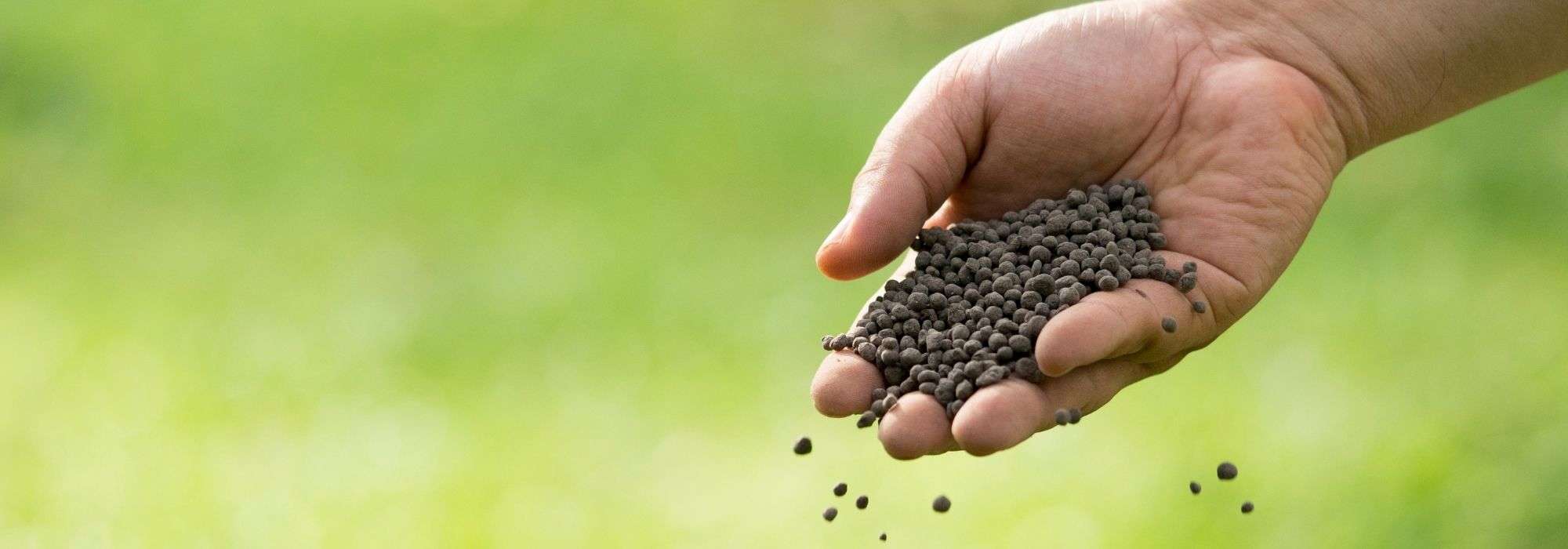
Crushed horn, dried blood, guano... what are these fertilisers used for in the garden and vegetable patch?
How and when to use them?
Contents
Guano, blood meal, horn meal under these scary, off-putting names hide three natural organic fertilisers derived from animal or plant matter. In organic vegetable patch or garden, they provide an eco-friendly way to fertilise and support plant growth, flowering and fruiting without impacting the environment. It can sometimes be hard to make sense of different fertiliser types, especially when they have such barbaric names! What exactly are they? Let’s explore benefits of natural fertilisers, and when and how to use them effectively.
What is a natural fertiliser? How does it work?
Natural or organic fertilisers, crushed horn, dried blood, guano, as opposed to chemical fertilisers, come from natural animal- or plant-based materials (feather meal, powder of seabird bones or fish arista, slaughterhouse waste from poultry, cattle or pigs). These organic materials are recycled and undergo a phase of decomposition before becoming assimilable by plants. Once transformed, they form fertilisers packed with minerals — in particular nitrogen, useful for development of leaves and stems, potassium, necessary for flowering and fruit development, and phosphorus, which strengthens plant resistance and contributes to root development.
They pose no danger to plants. Unlike natural soil amendments such as compost and manure, they do not improve soil structure but feed it long-term with organic matter that decomposes slowly. Unlike natural fertilisers, which have a rapid fertilising effect.
Depending on type, natural fertilisers will act within a few months or a few weeks on plant growth, some even combine rapid action with long-lasting effect. The latter are used as an alternative or as a complement to amendments, to be incorporated at planting time, or simply scratched into soil at base of established plants. These fertilisers provide gentle feeding suitable for organic farming and do not burn plant roots.
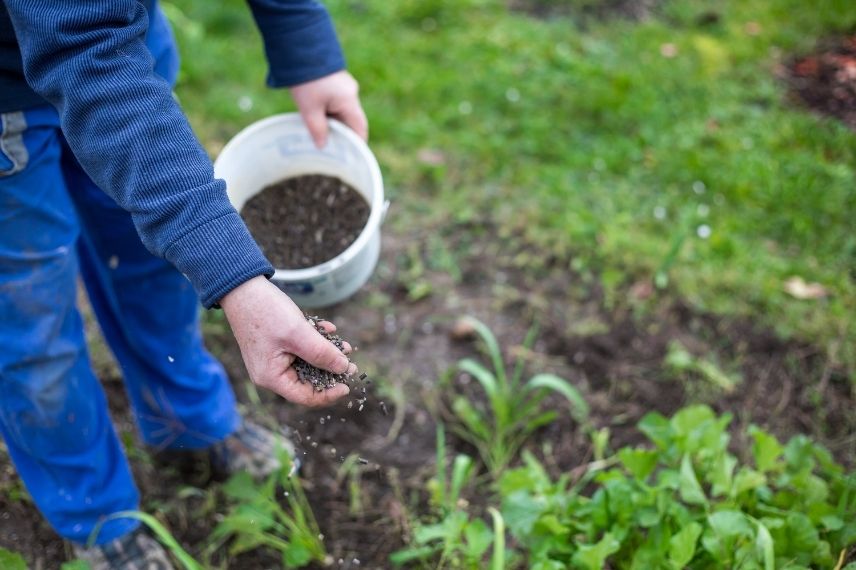
Benefits of natural fertilisers
Organic fertilisers offer many benefits; they:
- nourish plants by supplying them with various nutrients through progressive mineralisation as they decompose at varying rates in soil under the action of micro-organisms (bacteria, fungi, insects…),
- allow plants to take up nutrients as required,
- boost plant growth and improve soil mineral balance,
- stimulate microbial life, thus making soil more alive,
- release into soil mainly nitrogen, phosphorus and potash in variable but always measured amounts, without risk of over-application,
- better preserve the environment than synthetic chemical fertilisers.
Which natural fertiliser to choose?
Among main organic fertilisers are: crushed horn, dried blood and guano. Choice of natural fertiliser depends on several criteria, notably desired effect — slow, progressive release or fast-acting “boost”.
Crushed horn
It is an organic fertiliser obtained by grinding horns, nails or hooves of cattle. Very rich in nitrogen (13%), crushed horn breaks down very slowly in soil and provides progressive fertilisation suitable for all crops. This is called slow-release fertiliser. Excellent long-lasting base fertilisation.
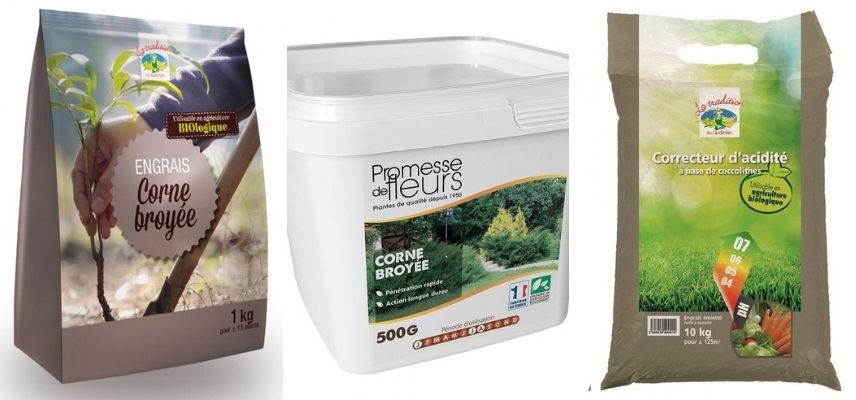
Crushed horn
When and how to use it?
Use in spring or autumn, from February to April and from October to December. Very useful when preparing soil and planting beds in autumn, at repotting, or for maintenance by simple spreading and raking in at base of plants, young vegetable and aromatic plants, trees, bushes and on short grass meadow.
Dosage:
For soil preparation: spread 60g/m² before digging. One handful = 30 grams – 300 g to 500 g per tree at planting – 100 to 150 g/m² for maintenance of vegetable patch, flowering plants, bushes and when creating a short grass meadow.
Dried blood or blood meal
It is sold as a powder or ready-to-use dark brown granules, 100% animal origin derived from poultry blood. Like crushed horn, it is particularly rich in nitrogen (14% N), also contains iron, but its release into soil is faster; it is a fast-acting boost fertiliser, with results visible in 3–4 days. Its action is rapid but lasting. Dried blood stimulates plant growth, development and intensifies leaf colour and supports flowering. It has a greening effect.
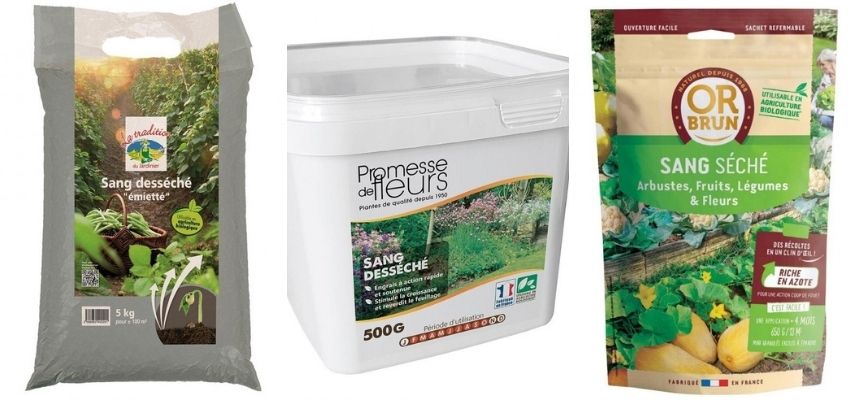
Dried blood
When and how to use it?
Use mainly in spring, before vegetation restarts to stimulate growth. Suitable for organic farming and does not pose risk of burning plant roots.
Use mixed with soil at planting, or by simply raking in at base of established plants.
Dosage:
At planting: 51 to 200 g per plant/surface depending on size. (1 handful = 50 g)
For maintenance: vegetable patch, roses, flowers: 75 g/m². Trees, bushes, hedges: 125 g/m². Short grass meadow: after mowing, 50 g/m².
Marine guano
This natural fertiliser comes from organic matter formed by accumulation and natural ageing of seabird droppings and remains. Odourless, it is probably the fastest of natural fertilisers. Very complete, guano is rich in nitrogen (12%), phosphorus, potassium and also trace elements. Like dried blood, it is a fast-acting boost fertiliser that releases its nutrients very quickly into soil. It naturally has a ‘starter’ effect at beginning of vegetation. It helps naturally stimulate growth of vegetable plants, ornamental bushes and flowering plants (annuals and biennials). It also regulates mineral balance of soil.
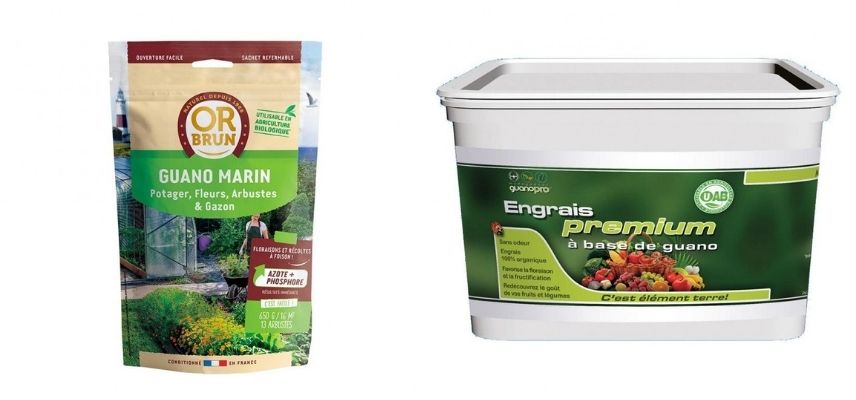
Marine guano
When and how to use it?
Use in spring, mainly from March to May, or for maintenance from March to October, mixed with garden soil at planting, or spread during growing season.
Dosage:
Allow 1 to 2 handfuls/m² (about 50 g) and incorporate guano when digging the soil.
→ Discover in our online shop all our natural fertilisers
- Subscribe!
- Contents
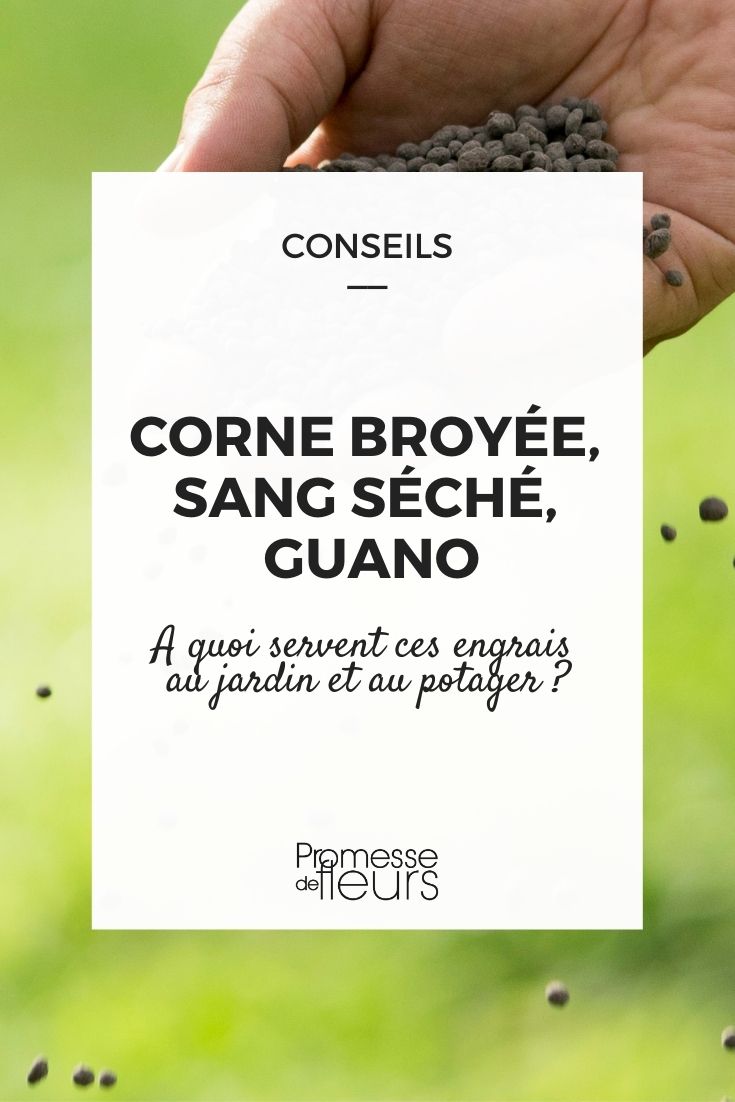































Comments